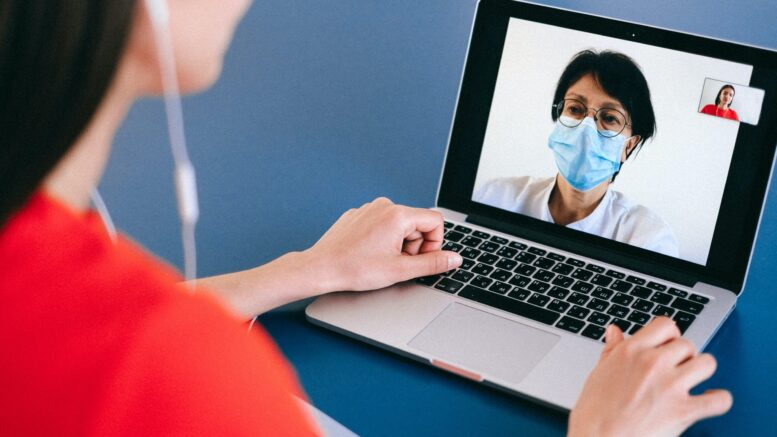International Telehealth Regulations – Overview
International Society for Telemedicine & eHealth defines telehealth as, “the provision of healthcare at a distance using communications technology”.
Telemedicine can not be described as a separate medical branch or discipline but rather as a tool or technological instrument – with a wide variety of application fields.
There are many different types of telemedicine practices. Healthcare facilities and practitioners worldwide use this tool daily for medical second opinions, emergency consultation, and various other purposes.
Even though the ongoing pandemic has further increased demand for telehealth products, many countries still struggle to come up with a stable legal, regulatory framework and have only recently issued temporary permissive measures to allow for virtual medicine in response to COVID-19.
This has once again raised debates about the need for effective International telehealth regulations.
Why has international telemedicine become a global regulatory challenge?

International Telehealth Regulations – Regulatory Liabilities
Reasons for this are multiple, including data protection, liability issues, the need for foreign physician licensure and registration processes, etc.
The use of telemedicine within national systems is quite common worldwide. This practice does not require patients to communicate with a foreign doctor or send sensitive private data abroad, thus the country’s legal framework for general medical practice can be applied locally to these processes.
Things get complicated when cross-border teleconsultation is needed. Let’s imagine you are a doctor from Germany and need to evaluate patients in Russia.
Teleconsultation within countries’ borders requires state medical licenses there, but on the other hand, cross-border telemedicine is free of regulations.
So you are free to take any action? Not really, according to Order No. 965n “On Endorsement of the Order of Providing Medical Assistance with the Aid of Telemedicine Technologies” initial consultations cannot be made through remote technologies and must be performed in hospital settings. The ban on initial check-ups is even stricter in China.
In contrast, United Arab Emirates does not seem to have such requirements and has even launched a smart system that is covered by state healthcare and offers initial consultations to citizens.
So telemedicine provider companies need to deal with blurry rules and constantly changing environments, which makes the use of this valuable tool less effective.
Tele-expertise and RSO regulations internationally
Sometimes there are no specific regulations, especially where there is no legislation regarding telemedicine. However, this does not generally make practicing telemedicine easier.
Where they do exist, telemedicine regulations generally are more tolerant of cross-border doctor-to-doctor consultations and second opinions, as long as such communications do not involve direct patient interaction, diagnosis, and treatment.
In fact, in some countries, like China, peer-to-peer consultations do not even always fall within the “practice of medicine” and Short-Term Foreign Practice License or Local licenses are not required.
The fact that in many countries, this is the only lawful option explains why cross-border telemedicine today is almost exclusively represented by tele-expertise. Asynchronous dermatology, radiology, and pathologic diagnosis services may be included in this category as well.
Reasons behind stricter regulations on cross-border teleconsultation
The important thing for us to acknowledge is that these rules were established with strong arguments in mind.
In January 2019 the International Society for Telemedicine & eHealth published an article by Nathaniel Lacktman, Esq. and Dr. Neil Nerwich entitled, “Teleconsultation Services for the Mobile Workforce- Considerations and Guidelines for the Provision of Global Services in Compliance with Regulations and Best Practice Clinical Standards of Care.”
According to this paper, “an in-country physician in the patient’s locality is strongly preferred to.. ”
1. Prescribe medications: Selecting proper medications requires deep knowledge and familiarity with the local market, including brand names, availability, accessibility, and differentiation between prescription and controlled medications.
2. Recognize how local context affects differential diagnosis and understand environmental risks: “The scope of the medical practice of a physician seeing patients in New York regarding tropical diseases such as malaria or Dengue Fever will be very limited compared to a physician managing patients in Singapore.
Considerations in the differential diagnosis and clinical approach…maybe substantively different (which may) be compounded for teleconsultations without diagnostic testing or in-person examinations.”
3. Achieve adequate follow-up of patients: Foreign doctors may need to make referrals to specialists and order diagnostic tests. This requires the ability to communicate in the local language.
International Telehealth Regulations – Data Protection
The EU General Data Protection Regulation inspires similar laws across the globe. This will make the practice of international telemedicine more complicated.
The majority of countries do not allow the transfer of medical data abroad without the data subject’s consent, and the level of protection must be checked and by local standards.
Looking forward
The full list of challenges is even longer. International telehealth will have to face problems associated with global taxation, billing and reimbursement, medical research, liability, and malpractice, fraud and corruption, etc.
COVID-19 pandemic has made the standardization process of international telemedicine faster, but the main work is still ahead.
References:
https://apps.who.int/iris/handle/

As a nutritionist, I research, find and experiment with recipes, natural diets and meal plans for weight loss, bodybuilding, and detoxing.
